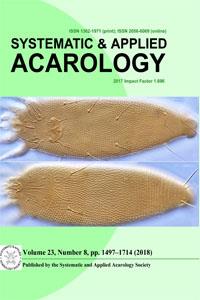Rubber trees, Hevea brasiliensis, are the main source of latex in the world, being cultivated in several states in Brazil. Calacarus heveae Feres and Tenuipalpus heveae Baker are considered the main pest mites of this crop. In this study, we evaluated the population dynamics of these two phytophagous species and of the most common predatory species during a one-year period on crops of rubber tree clones FDR 5788, CDC 312 and PMB 01, located in Igrapiúna, State of Bahia, northeastern Brazil. The results indicate that outbreaks of C. heveae and T. heveae occur from January to May. Population densities vary among clones, being lower on FDR 5788. Amblyseius perditus Chant and Baker (Phytoseiidae), Parapronematus sp. (Iolinidae) and Agistemus pallinii Matioli, Tavares and Pallini (Stigmaeidae) were the most abundant and frequently encountered predacious species. The population dynamics of these predatory species were related to the abundance of the phytophagous mites. However, the efficacy of these predators to mitigate infestations of phytophagous mites under natural conditions is unresolved due to the high reproductive rate of the phytophagous species.
How to translate text using browser tools
2 August 2018
Population dynamics of the main phytophagous and predatory mites associated with rubber tree plantations in the State of Bahia, Brazil
Elizeu B. Castro,
Felipe M. Nuvoloni,
Reinaldo J.f. Feres
ACCESS THE FULL ARTICLE

Systematic and Applied Acarology
Vol. 23 • No. 8
August 2018
Vol. 23 • No. 8
August 2018
Agistemus pallinii
Amblyseius perditus
Calacarus heveae
Hevea brasiliensis
Parapronematus sp.
pest mites
Tenuipalpus heveae




